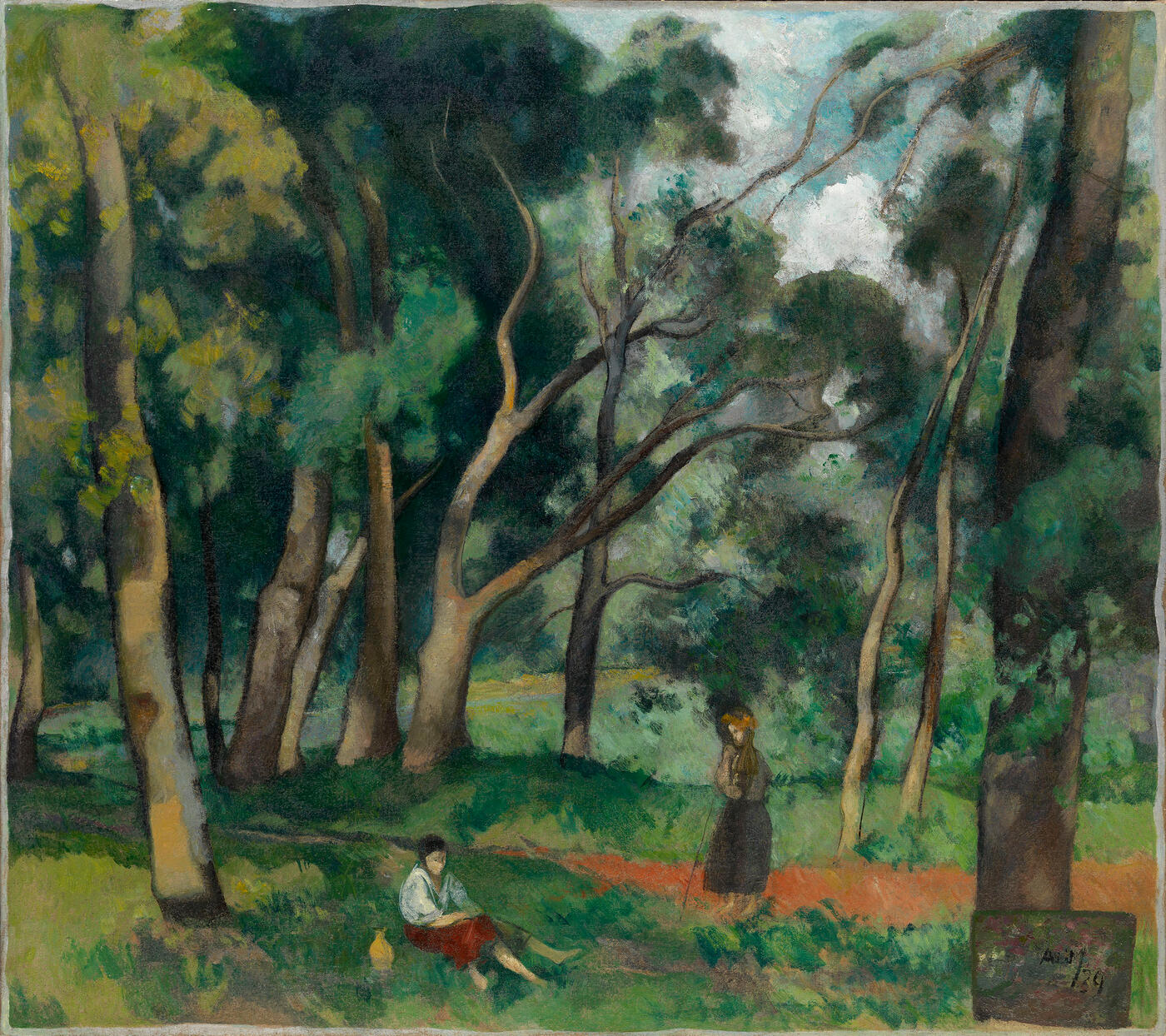MacDougall's Russian Art Auctions 27-30 May 2012
27 May 2012

* 24. SHEVCHENKO, ALEXANDER (1883-1948)
In the Park, signed with initials and dated 1939.
Oil on canvas, 86.5 by 97.5 cm.
250,000–400,000
Painted in the 1920s.
Provenance: Acquired directly from Tatiana Shevchenko, the artist’s daughter, Moscow.
Private collection, Europe.
Authenticity of the work has been confirmed by the expert Yu. Rybakova.
The story of the painting In the Park is one of the most interesting representations of Alexander Shevchenko’s creative method. Painted en plein air in the 1920s, when the artist was especially interested in depicting trees, this composition was completely covered over by
a new painting in 1939. Shevchenko resorted to this practice more than once – painting new things on top of old. Accused in the 1930s of formalism, “aestheticising decorativism”, and being a successor to “formalistically decadent Frenchmen” (principally Matisse and Derain) the artist saw no sense in keeping his work from the 1920s, and painted a new Landscape with Heather over the old image. Subsequently, during restoration, the later work was cleaned off to expose the original painting, but the later signature “ASh/39” is still preserved in the lower right-hand corner as a legacy from the layer of paint that had been removed.
In the 1920s, as in no other period, Shevchenko produced a particularly large number of studies from life. He would wander through the town and along the bank of his beloved Yauza with his paint box and sketchbook, and draw scenes and landscapes of the outskirts of Moscow. The landscapes of this period, accordingly, have a special charm and immediacy, striving to be emotionally expressive at the same time as specific. Experts have defined this as his path “through Cézanne towards Corot”. In this period Shevchenko does not paint nature generally, as designed by the artist’s will and subordinated to his compositional ideas, but, following in Derain’s footsteps, he creates architecturally figured landscapes of copses and avenues and, ultimately, addresses the theme of man in the landscape. The artist
attempts to include figures in the landscape without generating any sense that their connection to it is artificial, by trying to achieve an integrated and homogeneous composition.
His arboreal landscapes of this period become gentler and more picturesque and it is in these works that the artist finally overcomes the chromatic compartmentalisation of earlier years.
Notes on symbols:
* Indicates 5% Import Duty Charge applies.
Ω Indicates 20% Import Duty Charge applies.
§ Indicates Artist's Resale Right applies.
† Indicates Standard VAT scheme applies, and the rate of 20% VAT will be charged on both hammer price and premium.